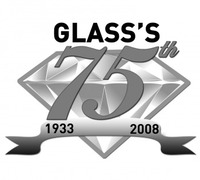Glass’s Guide celebrates 75 years of used car valuations
 This month marks the 75th anniversary of a motor trade icon: Glass’s Guide to Used Car Values. First published in July 1933 by William Glass, the Guide has become firmly established as the definitive source of used car data, relied upon by more UK dealers than any other pricing guide. It has also provided the template for the valuations now available to consumers via the internet, at glass.co.uk.
This month marks the 75th anniversary of a motor trade icon: Glass’s Guide to Used Car Values. First published in July 1933 by William Glass, the Guide has become firmly established as the definitive source of used car data, relied upon by more UK dealers than any other pricing guide. It has also provided the template for the valuations now available to consumers via the internet, at glass.co.uk. Born in Edinburgh in 1881, William Glass trained as an engineer and, after declining an offer from Cecil Rolls (later to become co-founder of Rolls-Royce) to join him in an ambitious plan to build high quality cars, began his own car manufacturing business.
This particular venture failed, but the Great War soon provided a new channel for Glass’s inventive nature, and he played a key role in the development of the through-the-propeller firing machine gun for British combat planes.
After the War Glass set himself up as a motor engineer, and advised on the condition and value of second-hand cars. He also became closely involved in the first UK used car auctions, and quickly spotted a business opportunity in helping those in the motor trade avoid the pitfalls of haphazard vehicle pricing. Glass’s Guide was born soon after.
“It is interesting to compare new car pricing and used values over the decades,” comments Adrian Rushmore, Managing Editor of Glass’s Guide. “For example, in the 1930s, when the Guide was first published, a new Ford 10 De Luxe cost £145 – equivalent to virtually two years’ salary. A comparable popular family car today – such as the new Ford Focus 1.6 (petrol) Zetec five-door – costs £15,350, equates to only seven months’ salary.”
Used car values have also changed dramatically over the decades, says Rushmore. “In the February 1950 edition a three-year-old, 16,000-mile Riley 1.5 Litre saloon, which cost £913 new, had a trade buying price of £800. Even for a car that would now be considered a premium-brand upper-medium sector model, this amounted to a remarkably high residual value of 87.6 per cent. A retained value of around 50 per cent would be more typical today for an equivalent car of the same age, albeit with more than double the mileage.
“The Guide editorial that accompanied the Riley valuation refers to businesses ‘feeling the retarding effects of the impending election’, but clearly prices were not under anything like the same pressure they have been over recent years.”

